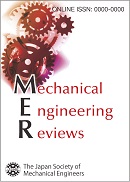1 巻, 1 号
選択された号の論文の8件中1~8を表示しています
- |<
- <
- 1
- >
- >|
-
2014 年 1 巻 1 号 p. MER0001
発行日: 2014年
公開日: 2014/01/01
PDF形式でダウンロード (66K) -
2014 年 1 巻 1 号 p. TEP0002
発行日: 2014年
公開日: 2014/01/01
PDF形式でダウンロード (1348K) -
2014 年 1 巻 1 号 p. FE0003
発行日: 2014年
公開日: 2014/01/01
PDF形式でダウンロード (264K) -
2014 年 1 巻 1 号 p. DSM0004
発行日: 2014年
公開日: 2014/01/01
PDF形式でダウンロード (2995K) -
2014 年 1 巻 1 号 p. CM0005
発行日: 2014年
公開日: 2014/01/01
PDF形式でダウンロード (20643K) -
2014 年 1 巻 1 号 p. TEP0006
発行日: 2014年
公開日: 2014/01/01
PDF形式でダウンロード (1469K) -
2014 年 1 巻 1 号 p. SMM0007
発行日: 2014年
公開日: 2014/01/01
PDF形式でダウンロード (3928K) -
2014 年 1 巻 1 号 p. DSM0008
発行日: 2014年
公開日: 2014/01/01
PDF形式でダウンロード (5049K)
- |<
- <
- 1
- >
- >|
